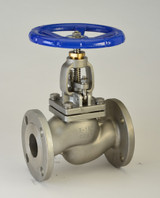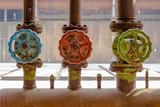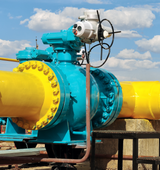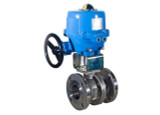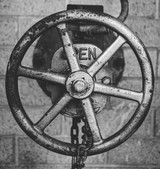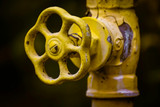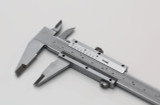Safety relief valves (often referred to as pressure relief valves) are incredibly important for maintaining safe pressure levels in various types of systems, from large industrial boilers to smaller residential water heaters.
In the most basic of terms, these valves act as safeguards, automatically regulating and releasing pressure when it exceeds a certain predetermined limit. This automatic reaction is there to prevent equipment damage and ensure general operational safety, and most systems will not function without them.
Multiple Uses
They usually come in various forms and functions, including pressure relief valves, steam relief valves, and temperature pressure relief valves, each designed for specific scenarios depending on your requirements.
In industrial settings, for example, they protect against the risks commonly associated with high-pressure systems. In homes, they are nearly always found in water heaters, quietly ensuring that temperature and pressure remain within safe, controlled bounds.
To use safety valves correctly, you must ensure you select the right valve for the job at hand. Anyone working in plumbing, heating, or industrial maintenance will already have a pretty good idea, but anyone outside of that skill set may need a little help in grasping the variations. It helps if you have a full understanding of the different types of valves available, how they work, and which may be best for you.
Pressure Relief Valve Operation
Safety relief valves operate on a very simple yet ingenious principle relating to maintaining balance within a system. Basically, when the pressure in a system climbs too high (such as in a boiler or water heater), the valve opens to release some of that pressure in order to avert any lingering potential hazards.
In boilers, for instance, a boiler pressure relief valve is absolutely essential, as it ensures that if the system pressure becomes dangerously high, the valve will open, releasing steam and reducing the pressure back to a safe level. The idea is not just about protecting the equipment - it's a really important safety feature that could prevent nasty accidents.
In plumbing systems, particularly in residential settings, the water pressure relief valve does the same kind of job, protecting against the dangers of excessively high water pressure, which can cause untold damage to pipes and appliances.
These types of valves are often set to a specific, predefined pressure limit, which, when exceeded, will trigger the valve to open and release water. At the same time, the pressure inside the system is reduced.
Pressure Relief Valve Applications
Pressure relief valves have a huge range of use cases and are versatile in many different settings. In industrial environments like factories, they play a key role in managing pressure in processes involving gases, steam, or liquids. Chemical plants and refineries are usually full of pressure relief valves in various capacities.
Most people know them as a component in water heating systems, protecting against excessive pressure that can lead to serious appliance damage. You will also see them in HVAC systems and large-scale plumbing infrastructures, where ball valves, for example, ensure safe and efficient operation.
How to Select the Right Relief Valve
Selecting the best safety relief valve involves several important factors, firstly relating to size and connection types, which are needed to ensure compatibility with your particular system. In the most basic of terms, the golden rule is that the material of the valve should match the system it will encounter, whether it's steam, hot water, or chemicals.
Pressure rating is another critical factor because the valve must be capable of handling the system's maximum operating pressure. Compliance with industry standards (like ASME for boilers, for example) makes sure that reliability and safety are taken care of through various safety certifications. It is worth noting that these certifications are extremely important; they assure us that the valves have been properly tested and proven to operate safely under certain industrial specified conditions.
By choosing certified safety relief valves, you're not only ensuring the safety of your systems but also meeting the best practices and regulatory requirements in the valve manufacturing industry.
Over the last decade or two, there has been a flood of cheap, inferior-quality valves manufactured under non-regulated conditions overseas. This isn't conducive to safety or reliability, so please do ensure you select certified valves over inferior products as a priority - the price difference is negligible, anyway.
Maintenance of Safety Relief Valves
Ensuring the long life and reliability of safety relief valves starts with regular, thorough maintenance - something that should never be skipped over. Thankfully, it isn't particularly difficult to do. You simply need to carry out a routine inspection to identify signs of wear, corrosion, or damage.
This needs to be done as an absolute priority in industrial settings where valves play a potentially disaster-averting part in maintaining good system pressure. In residential systems (like water heaters), regular maintenance prevents common issues like valve leaks or failure to open, which can be catastrophic in the worst-case scenario.
Testing Safety Relief Valves
Testing is equally important and should be conducted periodically to verify that valves open at the correct pressure settings. This testing ensures that the valves are responsive and reliable, particularly in emergencies where overpressure could lead to system failures or even safety hazards.
Regular testing not only complies with safety regulations but also ensures your system runs at optimal performance. It is worth being fairly diligent about regular testing because valves are designed to last a long time if properly and regularly checked, that is.
The Safety Valve Difference at ValveMan
Our safety relief valves are an all-important component across a whole range of industries and residential settings, essential in maintaining system safety and integrity. With proper selection, maintenance, and testing, our safety relief valves will function reliably, exactly as intended, protecting against pressure-related hazards.
At ValveMan, we have supplied American factories, industries, and homes with reliable and high-quality valves since 1965. We happen to know a thing or two about the best valves for each job, and if you need a little help or advice, feel free to reach out. If your question is related to valves, we have the answers!
In the meantime, for a full selection of valves, visit our ValveMan store to see all of our solutions. If it's safety, reliability, and peace of mind you need in a valve, we've got you!
Resources
- Wikipedia Link describing Safety Valves: https://en.wikipedia.org/wiki/Relief_valve
- National Board of Boiler and Pressure Vessel Inspectors:
Our Posts
View AllData Cooling Centers and Sanitary Valves
Overheated data centers pose a massive challenge, and the global data center cooling market is growi …
Read MoreValve Materials for Gaseous Oxygen Service
Oxygen may seem safe because it is colorless, tasteless, and odorless, but in the wrong conditions, …
Read MorePneumatic Actuators Valve Types
Have you ever stopped to think about what makes an automated assembly line push, pull, lift, and rot …
Read More-320°F Liquid Nitrogen Cryogenic Control Valve Setup
Need a valve that can handle -320°F liquid nitrogen without freezing up — and still control flow? He …
Read MoreWhy Fall is the Perfect Time for Valve Maintenance (And What Happens If You Wait)
We're well into fall now, which means it's time for that conversation nobody wants to have: winter p …
Read MoreFrom the DMZ to Bonomi: Rick Wentzel’s Valve Legacy
In the inaugural episode of the Fully Open podcast, host Gil Welsford sits down with Rick Wentzel of …
Read More
Check Valve vs Backflow Preventer Comparison | ValveMan
If you need to make sure that fluid in your pipe system flows in one direction only, and prevent rev …
Read MoreDifferent Types of Gas Shut Off Valves | ValveMan
Whether you're upgrading your residential gas system, looking for the best gas shut off valve for yo …
Read MoreGlobe Valve vs Ball Valve Comparison Guide | ValveMan
Valves are widely used in industrial and manufacturing facilities, but they’re also used in utilitie …
Read MoreNEMA Ratings Explained | ValveMan
Have you ever wondered what that little NEMA number on your electric actuator meant? Or perhaps, you …
Read MoreGate Valve vs Ball Valve Comparison Guide | ValveMan
Valves are widely used in industrial and manufacturing facilities, but they’re also used in utilitie …
Read MoreValve Inspection - Main Points of Valve Inspection and Testing in Manufacturing Settings
Industrial facilities rely on different types of valves (such as gate valves, check valves and ball …
Read MoreCan Ball Valves Be Used For Flow Control?
Ball valves are widely used in plumbing and piping systems, in fact, they are one of the most common …
Read MoreIntroducing Bonomi Valves
The Bonomi Group is a leader in industrial sectors including oil and gas, hydraulics, heating and en …
Read MoreUnderstanding Valve Actuators: Manual, Electric, Pneumatic and Hydraulic
Are you a beginner new to the valve world, ready to learn more about the various types of valve actu …
Read More3 Check Valve Mistakes to Avoid
So, you’re looking for a check valve, but you’re not sure if there’s any pitfalls to look out for? O …
Read MoreTypes of Valves in Plumbing
Have you ever wondered what goes into managing the flow of water in your home, or through a building …
Read MoreIntroducing Apollo Valves
Apollo Valves® inventory includes a wide range of valve products supplied to diverse markets. These …
Read MoreTypes of Water Valves
We all know that valves play a crucial role in regulating the flow of liquids and gasses in a broad …
Read MoreUnderstanding Valve Sizes and Measurement
Sizing the appropriate valve is critical to ensuring the performance of your system. Whether you'r …
Read More
 888-825-8800
888-825-8800














